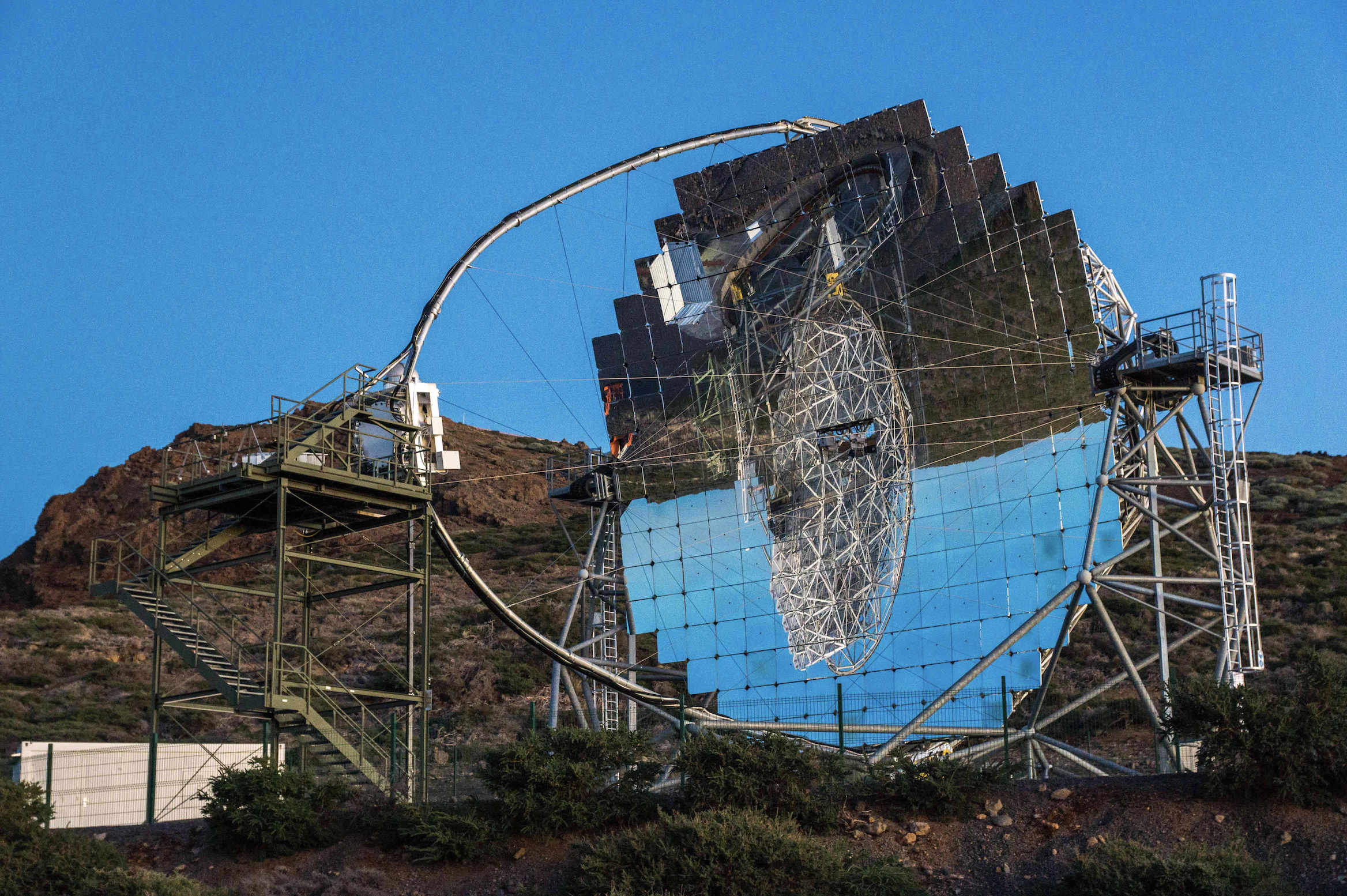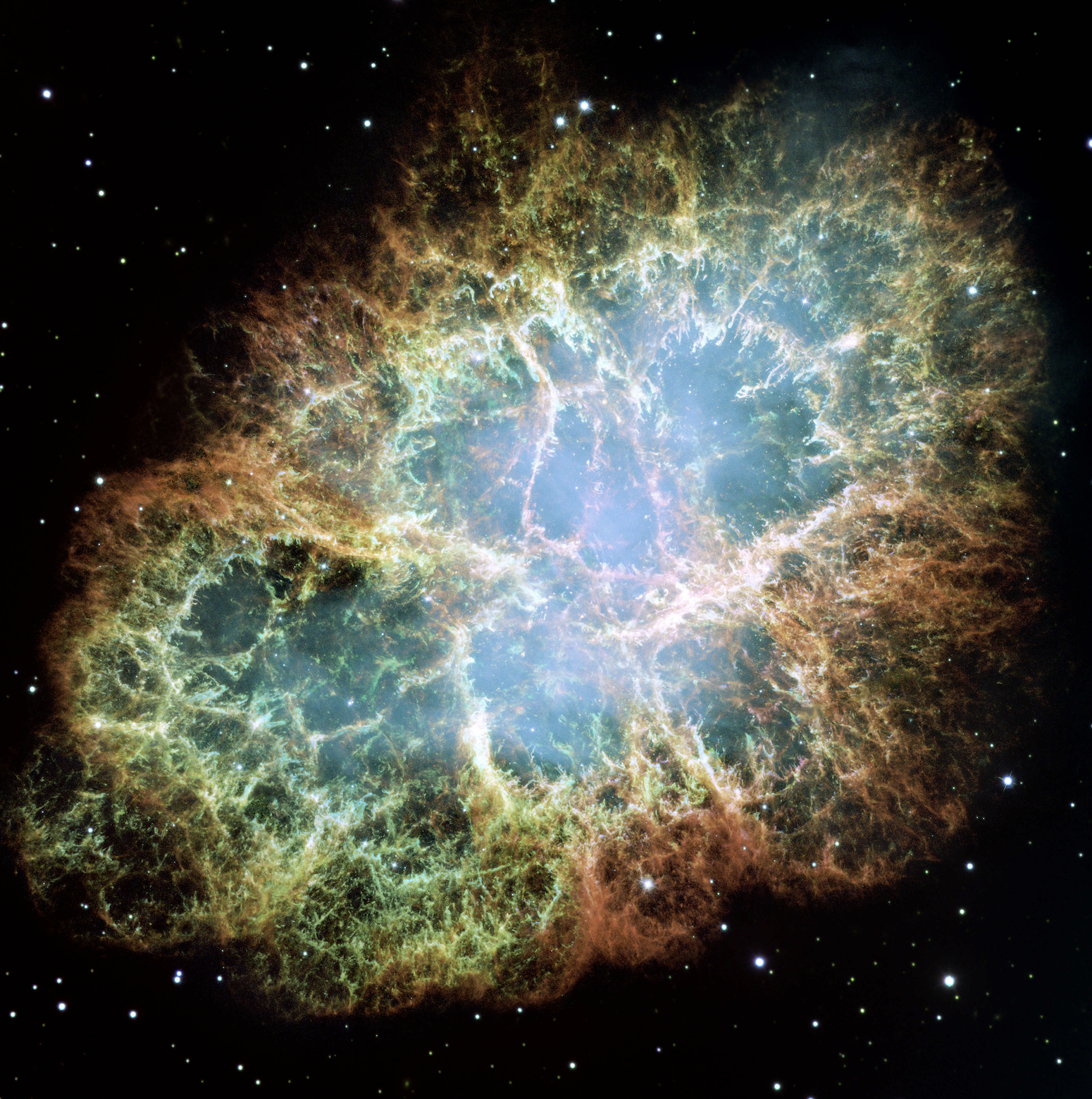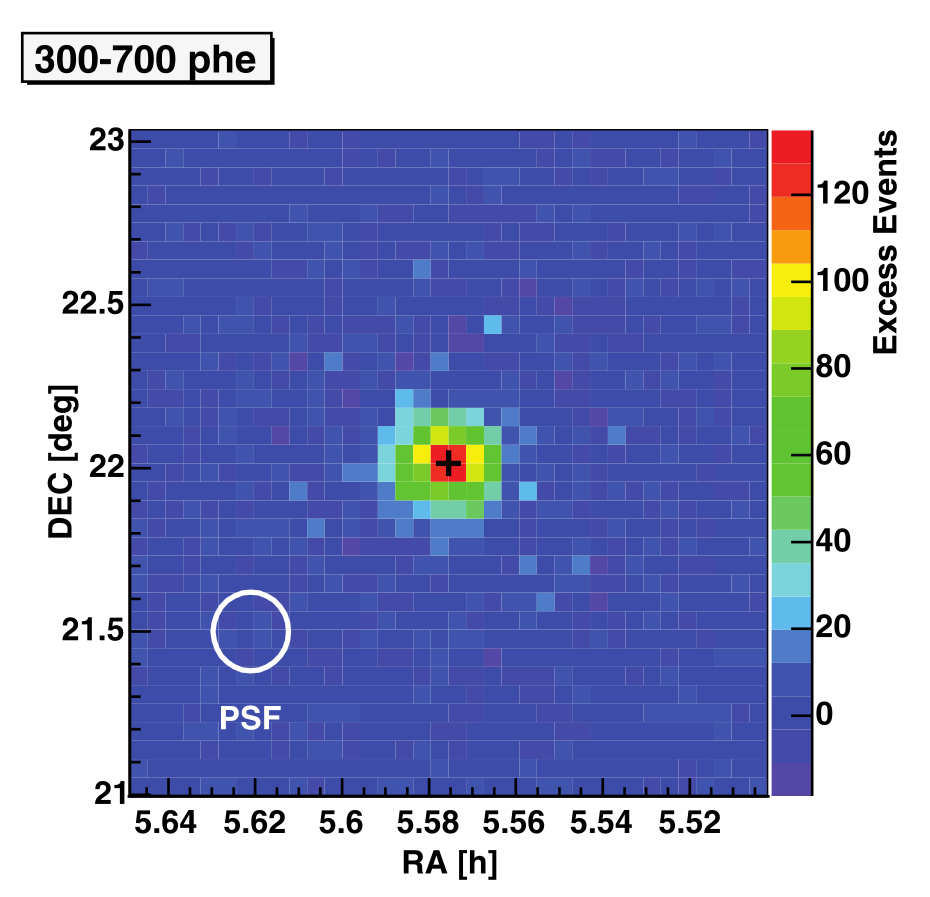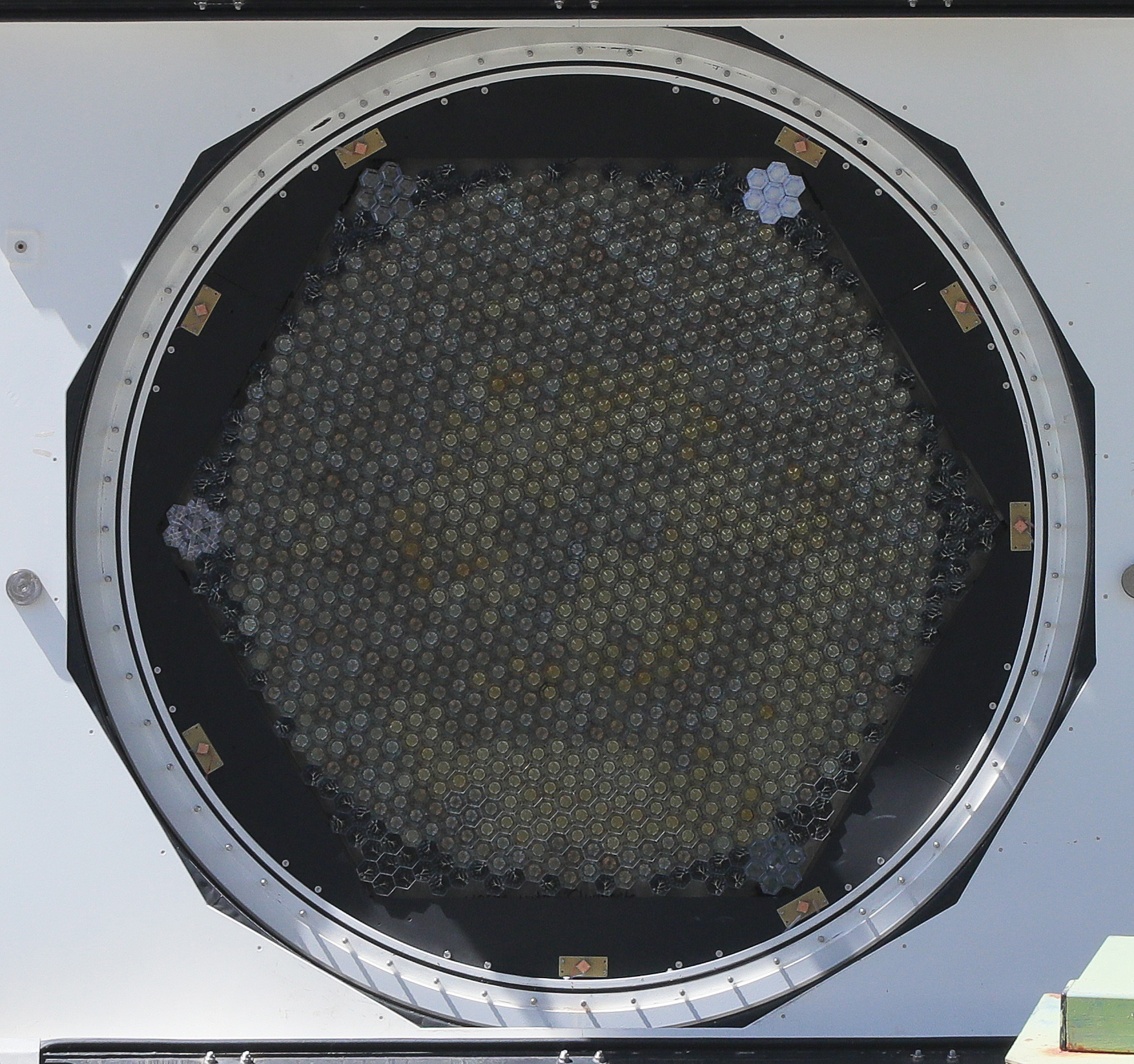MAGIC
Skip navigation and go to main content
- Home
- General Information
- Science with MAGIC
- MAGIC members
- Maintenance

Cherenkov telescopes » Optical telescopes
The MAGIC telescopes and their neighbours FACT and LST-1 are the first telescopes which a visitor finds entering the Observatory of Roque de Los Muchachos premises. Their mirror dishes are very impressive since they reflect the sky and part of the Roque vegetation. A picture that many visitors like to take consist in MAGIC I telescope reflected in MAGIC II mirrors...

MAGIC I telescopes reflected in the MAGIC II telescope (Credit: M. Nöthe)
The most frequently asked question from visitors is: why those telescopes do not have a dome? MAGIC telescopes and in general IACT telescopes are very different from optical telescopes. A dome is not needed since they do not have to protect very delicate electronic
elements which are instead present in optical telescopes. Even if MAGIC mirrors are wired on their back, to allow the shifters to move them and align them before the observations start, the cables are very well isolated and do not need additional protection or coverage. What needs to be protected from the sunlight are the cameras, which are very delicate and sensitive to the light: because of that, proper lids in front of the camera are closed after every observation night and when weather conditions are not good (rain, strong winds). IACTs are not constructed in order to detect visible light as optical telescopes do. With an optical telescopes pictures of celestial objects are acquired magnifying the image by powerful lenses and mirrors.

Credit: NASA, ESA and Allison Loll/Jeff Hester (Arizona State University). Acknowledgement: Davide De Martin (ESA/Hubble).
Above you can see an optical image of the Crab Nebula in the constellation of Taurus, remnants of a supernova which could be observed in China in 1054. Visible is a structured cloud of hydrogen gas, about 6000 lightyears from our solar system, and today some 10 lightyears across. The picture was taken by the Hubble Space Telescope. In the gas cloud of the Crab Nebula, a source has been observed (by satellite experiments) that emits pulsed X-ray radiation (keV to MeV range), at a frequency of 30 Hz. This radiation originates from a pulsar, a spinning neutron star, in the centre of the nebula. The Crab Nebula also emits very-high-energy (from 100 GeV ) gamma radiation, at a fairly constant rate. This radiation has been observed by all existing IACTs, and used as a standard candle to calibrate and study the performance of the telescopes. IACTs operate in a very different energy range and frequency respect to optical telescopes, and this is why images of the Crab Nebula taken by an IACT are so different respect to the ones taken by an optical telescope.

The pictures below show the back of MAGIC II camera (left), where the cables connecting the 1039 photomultipliers are visible, and the light collecting surface in front of the camera of MAGIC II (right), specifically developed to ensure optimal entrance angles for all incoming photons (so-called Winston cones).


Credit: Alex Hahn
So far we have highlighted the differences between IACTs as MAGIC and optical telescopes: but since Cherenkov light is visible (it can be seen by the human eye as blue), in some way we could also say the IACTs are a kind of optical telescopes...They detect a visible light indeed, the Cherenkov radiation emitted by ultrarelativistic particles travelling through the atmosphere...but they use that visible light to track back to the very-high-energy gamma-rays which were emitted by active galactic nuclei, pulsars, radiogalaxies, supernovae, gamma ray bursts, dark matter candidates, extragalactic or galactic sources, and to investigate the extreme processes in act in the most powerful particle accelerators of the Universe.